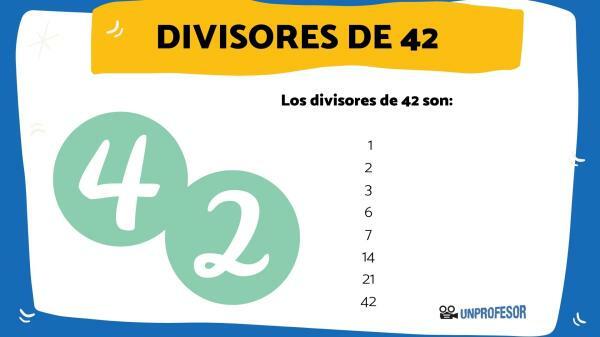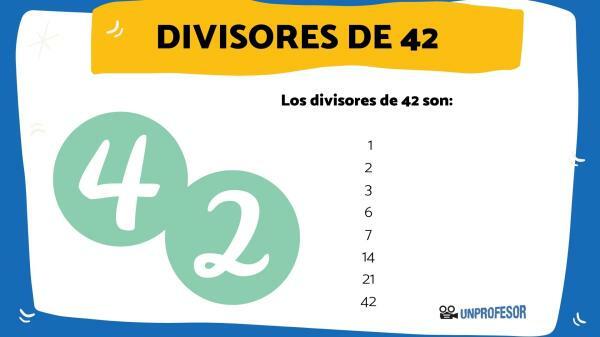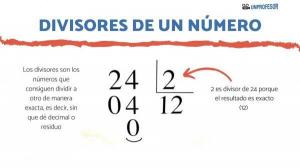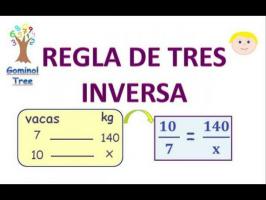Divisors of 42 and examples

The divisors of 42 are: 1, 2, 3, 6, 7, 14, 21, 42. In unProfesor we help you so that you can learn to detect them by yourself with the divisibility criteria
In a new lesson from a Teacher we are going to see what are the divisors of 42 and examples. To begin, we are going to remember what the concept of divisors of a number is, then we will continue with the divisors of 42, to end with some exercises on the subject.
To find out what are the divisors of 42, we will have to find all the numbers that divide 42 with a remainder of zero.
Let's seewhat are the divisibility criteria.
- Divisibility test for 2: Any number divisible by 2 ends in an even number or in zero.
- Divisibility criterion of 3: every number divisible by 3 has the sum of its digits as a multiple of 3.
- Divisibility criterion of 4: every number divisible by 4 has its last digits ending in zero or multiples of 4.
- Divisibility test for 5: Any number divisible by 5 ends in either a five or a zero.
- Divisibility test for 6: Any number divisible by 6 is divisible by 2 and 3 at the same time.
- criterion of divisibility of 7: every number divisible by 7 has the subtraction between twice the unit and the remaining number without that number, as a result zero or multiple of 7.
- Divisibility criterion of 8: every number divisible by 8 has its last three digits that are zero or multiples of 4.
- Divisibility test of 9: every number divisible by 9 has the sum of its digits as a multiple of 9.
- Divisibility test for 10: Any number divisible by 10 always ends in zero.
Now we apply the criteria and by dividing we get divisors of 42.
- Divisibility criterion of 2: ends in an even number, so 42 is divisible by 2. - The result of division is 21. Thus we find two divisors of 42, which are 2 and 21.
- Divisibility criterion of 3: The sum of its digits is 4 + 2 = 6, which is a multiple of 3. - The result of the division is 14, therefore 3 and 14 are divisors of 42.
- Divisibility criterion of 6: We already saw that it is divisible by 2 and 3 at the same time.- The result of the division is 7, so 6 and 7 are factors of 42.
We know that every number is divisible by one and by itself, and therefore 1 and 42 are also divisors of 42.
The rest of the criteria are not met, so we can ensure that The divisors of 42 are: 1, 2, 3, 6, 7, 14, 21, 42.
- 42/1 = 42
- 42 / 2 = 21
- 42 / 3 = 14
- 42 / 6 = 7
- 42 / 7 = 6
- 42 / 14 = 3
- 42 / 21 = 2
- 42 / 42 = 1

Now that we know what the divisors of 42 are, let's review basic math concepts so we can better understand this lesson.
The divisors of a number integer are the whole numbers that can divide exactly to that number, and therefore the remainder of that division will be zero.
For a number to be divisor of another we must think that in turn They will be multiples of each other. therefore we can affirm that each whole number has a specific amount of divisors.
When we perform the division between two integers and as results we get an integer also, whose remainder is zero, then we can say that the number that it is dividing is a divisor of the other number.
let's not forget that all integers are divisible by 1, as well as being divisible by themselves. Then ALL numbers are divisible by at least two divisors.

Here we leave you some exercises of divisors of 42 with solutions below so that you can practice at home.
Exercise 1
What is the Greatest Common Factor between 28 and 42?
- 7
- 14
- 28
- 2
Exercise 2
Are the divisors of 42 10 whole numbers?
- TRUE
- Fake
- has no dividers
Exercise 3
Which of these numbers is a divisor of 42?
- 4
- 8
- 9
- 6
And to end this lesson on the divisors of 42, here we leave you the solutions of the previous exercises.
Solution 1
Let's first review what LCM means.
We can say that the greatest common divisor between two or more integers is the largest integer among them, which divides them with their remainder being zero. That is, with other words, a common divisor between those numbers that is the greatest of all.
The divisors of 28 are: 1, 2, 4, 7, 14, 28. They can use the divisibility criteria to find them, or they can browse the website of a Teacher and find what they are and their explanation.
So if the divisors of 28 are 1, 2, 4, 7, 14, 28 and the divisors of 42 are 1, 2, 3, 6, 7, 14, 21, 42.
Between them, 1, 2, 7 and 14 are repeated. Therefore the greatest divisor that 28 and 42 have in common is the number 14.
LCM (28.42) =14
Solution 2
As we saw previously, the divisors of 42 are 8 integers.
Solution 3
The only number in there that is a divisor of 42 is the number 6.
If you liked this lesson, share it with your classmates. And remember that you can continue browsing the page. On the website of a Teacher there is very interesting content that can be useful to you.




